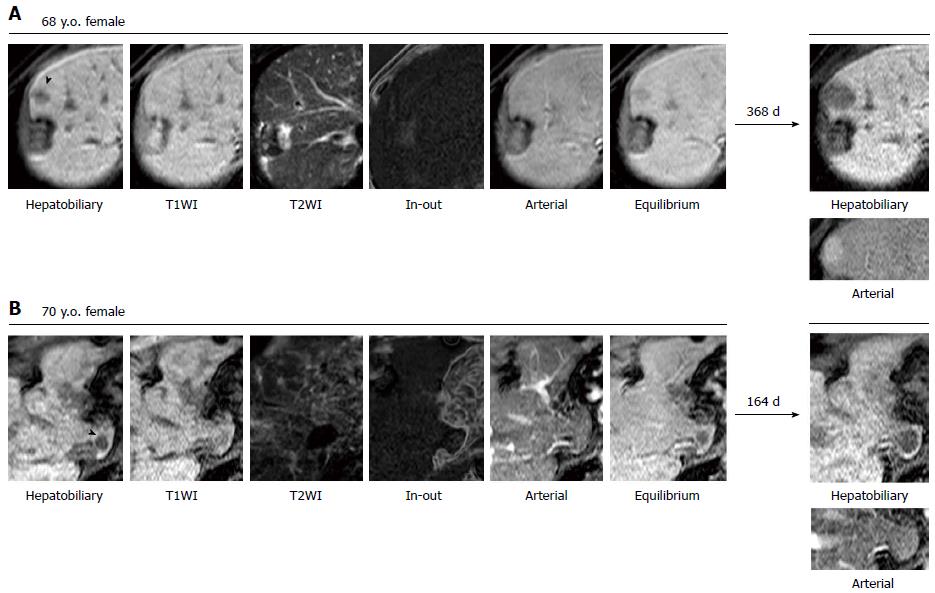Copyright
©The Author(s) 2015.
World J Gastroenterol. Apr 21, 2015; 21(15): 4583-4591
Published online Apr 21, 2015. doi: 10.3748/wjg.v21.i15.4583
Published online Apr 21, 2015. doi: 10.3748/wjg.v21.i15.4583
Figure 1 Representative gadolinium ethoxybenzyl diethylene-triamine-pentaacetic-acid magnetic resonance imaging of non-hypervascular nodules that progressed over time.
A: A non-hypervascular nodules (NHNs) approximately 10 mm in diameter was clearly detected in the hepatobiliary phase, as indicated by an arrowhead in the area ventral to the scar of radiofrequency ablation. The NHN was also detected in T1-weighted imaging (T1WI), the arterial phase and the equilibrium phase as a nodule with lower intensity. A fat deposition was unclear in the subtraction of in- and out-of-phase (In-Out) fat-suppressed T1WI. Approximately 1 year later, the NHN had grown to 20 mm in diameter and was partly enhanced in the arterial phase; B: A NHN approximately 8 mm in size was clearly visualized in the hepatobiliary phase, as indicated by an arrowhead in segment 1. The corresponding low-intensity nodule was recognized in T1WI, as well as the equilibrium phase, while a fat deposition was unclear. After approximately 5 mo, the NHN grew to 15 mm in diameter without an increase in the arterial supply.
- Citation: Kanefuji T, Takano T, Suda T, Akazawa K, Yokoo T, Kamimura H, Kamimura K, Tsuchiya A, Takamura M, Kawai H, Yamagiwa S, Aoyama H, Nomoto M, Terai S. Factors predicting aggressiveness of non-hypervascular hepatic nodules detected on hepatobiliary phase of gadolinium ethoxybenzyl diethylene-triamine-pentaacetic-acid magnetic resonance imaging. World J Gastroenterol 2015; 21(15): 4583-4591
- URL: https://www.wjgnet.com/1007-9327/full/v21/i15/4583.htm
- DOI: https://dx.doi.org/10.3748/wjg.v21.i15.4583









